You can never have too many books, right? Well, actually, you kinda can. With hundreds of thousands of new books published each year, and with many library shelves so overwhelmed that librarians are often forced to throw books away, even those of us who feel sentimental about the written word and the pages that hold them have to admit: we’ve got a problem.
So what to do with all of those outdated encyclopedias and forgotten math textbooks? Aren’t there any other options aside from trashing them? Recycling, of course, comes to mind. But the bindings of many books, especially hardcovers, contain adhesives that can’t be recycled. So the inside pages can go, but then what happens to the rest?
Enter Laura Bruland Shields. A long-time book-lover herself and an artist at heart, she’s taken on this wasteful problem and is making beautiful solutions every day – in the form of one-of-a-kind, laser cut accessories made directly from books that would otherwise be thrown away. On top of that, she takes a portion of the proceeds from her business and donates them to benefit literacy and girls’ education around the world.
When we learned about Laura’s story, we knew we had to feature her in our Uncommon Impact series – her values as a maker and ours as a certified B-Corp company are a perfect match. We love that she thinks ethically in the way she makes her products and uses her to success to benefit a cause she’s passionate about.
Read on to hear from Laura directly about her creative process, some of her favorite book-titles-turned-accessories, and how her business is helping to spread a love of reading worldwide.
Were you always a maker/artist of some kind? What led you to start using books as your main materials?
Both of my parents are artists, so growing up, I always had my hands in one creative project or another, and I was lucky enough to be exposed to all kinds of art and design from a very young age. I remember being embarrassed that any gifts we gave were always handmade, even down to the hand-stamped copy paper we would wrap them in, but I’ve realized over the years how special those presents were. As an adult, I continued handmaking presents – one year for Christmas, I made felt hairbands and pins from a wool sweater. After the holidays, I just kept on making them, started selling them, and eventually coined the name Yes & Yes Designs. After a year or two I started looking into laser cutting to expand the line, and fell in love with the process.
As a life-long bibliophile, it was only a matter of time before I was experimenting with books. I was (and still am) inspired by the one-of-a-kind colors and patterns on old hardcover books, I like to think of it as a collaboration between me and the books: I aim to showcase their individual personalities into one-of-a-kind jewelry.
Talk to us about sustainability. How much does recycling/reusing factor into your motivation for making these accessories?
I think it’s so important, as a designer, to try to make ethical choices in your products, but more importantly: to make those ethical choices appealing. I want our customers to be drawn to our pieces without realizing that they’re necessarily recycled, and then feel surprised and excited when they learn about the origins of the piece. I don’t want anyone to have to choose between visually interesting jewelry and jewelry with a conscience. And for me, the one-of-a-kind nature of the discarded and falling-apart books is what keeps me coming back for more. The challenge of finding just the right spot to cut a pair of earrings is half the fun!
What criteria do you have for choosing a book to use? Are they usually damaged, or unusable, or particularly old?
Yes, the books we use are either outdated, damaged, or library discards. Sometimes it seems like the particularly boring titles actually have the best covers – old math textbooks are a particular favorite of mine. We often get asked if we have pieces cut from a particular book – usually a classic – and our answer is almost always “no,” simply because we don’t want to use any books that someone else might read. If it’s falling apart already, then it’s fair game, but otherwise, we leave classics alone, and especially beautiful old tomes in good condition – those often become a part of my personal collection if I really can’t resist.
It looks like the main part of the book you use is the hard cover. What happens to all the inside pages?
About half of our books look nice enough to just let the covers provide the colors and patterns. Not every unwanted book is particularly easy on the eyes, though. For those less-than-beautiful books and for the plain back covers of books, we attach pages from the insides of the books onto the cover to create an interesting pattern. We use pages from a set of old World Book Encyclopedias to create a text pattern, pages from damaged comics from the ‘80s and ‘90s to create comic patterns, and pages from old sheet music catalogs to create music patterns. Inevitably, there are more pages than covers, so whatever we can’t put to good use we recycle.
Could you walk us through the process of making one of your pins, from start to finish?
We start with the never-ending hunt for books: we’ll usually get the books from library sales, garage sales, or via donations. If the book has an interesting cover, we can laser cut it without any preparations. Otherwise, we’ll adhere a page from an encyclopedia onto the cover to create an interesting text pattern. After we’ve laser cut our pieces from the books, we coat each piece with many fine layers of clear acrylic paint on both sides to help protect them, and to make them more water resistant. The final step is to assemble the pieces into earrings, necklaces, pins, or whatever it is that we want to make!
As a fellow book-lover, I cringe at the thought of cutting into a book! Do you ever feel regretful about it, or does the end-product make up for any of that (probably ridiculous) guilt?
Considering that most of the books we use are outdated, falling apart or one step away from being dumped, I don’t find myself feeling guilty anymore. And since thousands of books are thrown away each year in the SF Bay Area alone, I mostly feel like I’m giving the books a fresh start. For example, we recently used a volume on warehouse management systems from the 1980s. It had a lovely dark teal cover with gold embossed text, and we were able to cut some new necklace styles from it. By and large, the books that we’re using are ones that not even the most avid book lover would want to make room for on their shelf.
There’s an interesting article by Linda Holmes about how libraries often have to throw away books, so I like to think that the books I’m using are at least being saved from that fate. I used to be terrified of meeting librarians when I was selling at craft shows, but I’ve definitely noticed that they’re the most accepting of my use of books: they know first-hand how many get thrown away! And, since we often get our books from library sales, I feel good that we’re spending money at our local libraries and helping them clear space for more (wanted) books.
We love that you donate some of your proceeds to literacy programs. What inspired you to do so?
As I’ve mentioned, I’m an avid reader myself: I read every night before I go to sleep, or more often if I’m reading a particularly good book! I wanted our jewelry to be an instrument for spreading the joy of reading, and a very direct way of doing that is to contribute to literacy programs! I also thought it might help ease the consciences of bibliophiles that struggled with the fact that we cut up books. When looking at organizations to donate to, it was important to me to find an organization that had a good reputation among non-profits, and could do the most good with the money we’d contribute. We decided to support Room to Read, a well-respected organization that tackles literacy and educational gender equality in developing countries. Room to Read works in collaboration with communities and local governments across Asia and Africa to develop literacy skills and a habit of reading among primary school children, and helps support young women to complete secondary school.
What are some of the weirdest/funniest book titles you’ve repurposed so far?
A few of my favorites:
Your Youth: Getting the Best Out Of It!
Bobo the Pig is Good and Bad
Mr. Wizard’s Science Secrets
Medical Hypnosis
Faerie Roads to Science Town
I’ll often document particularly weird titles on my instagram, so follow me!

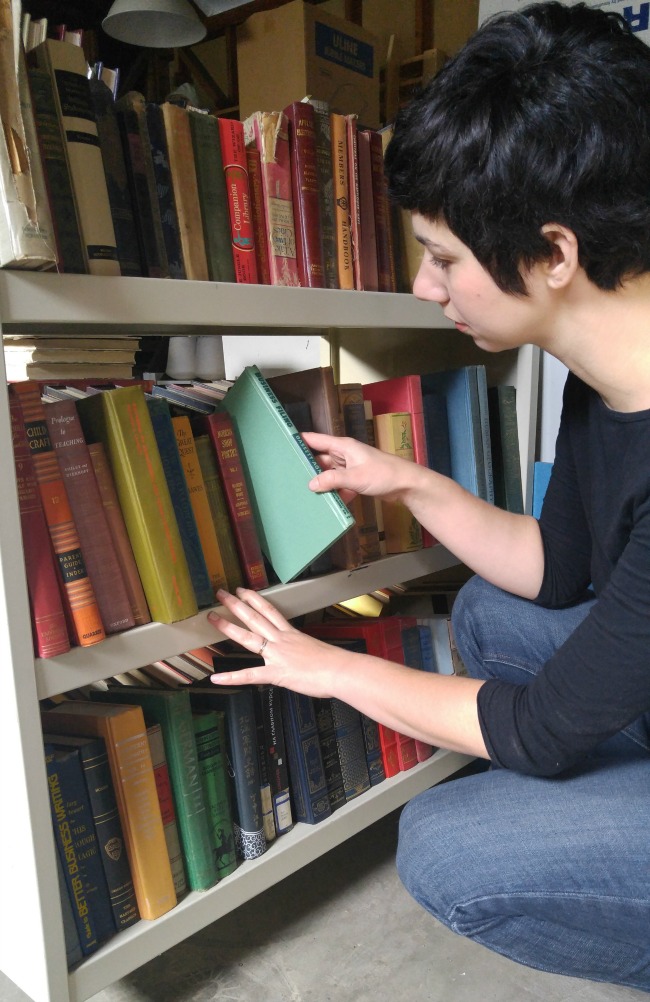
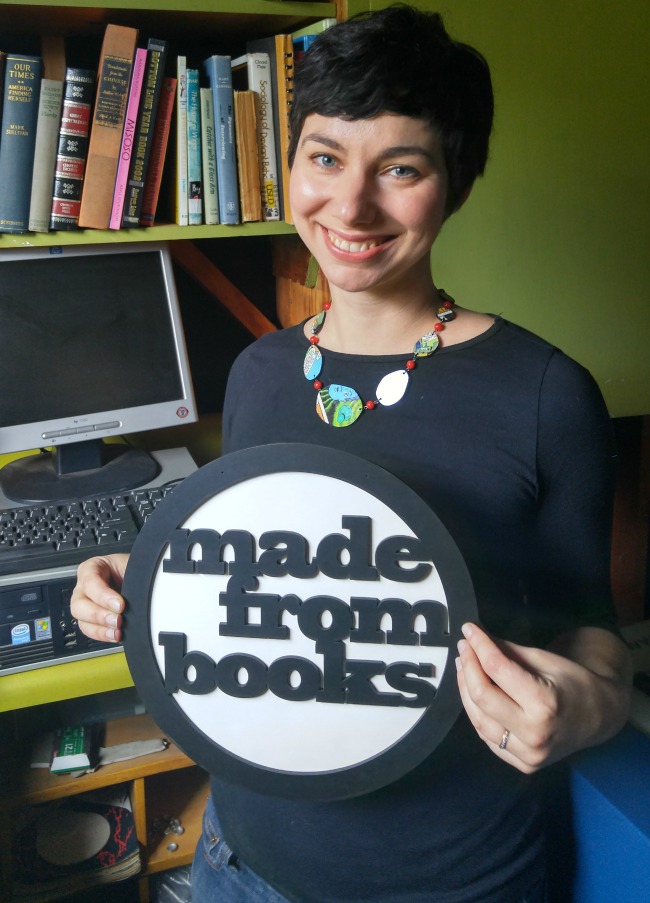
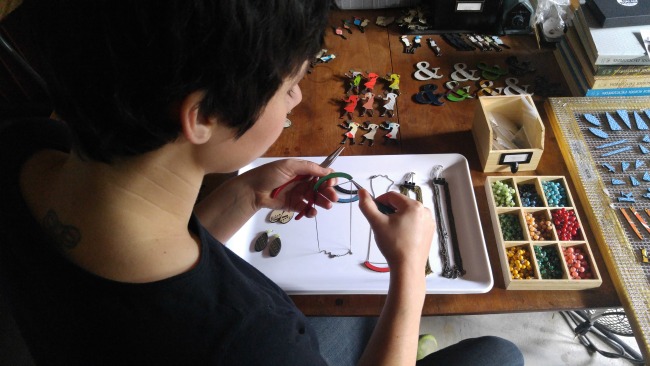
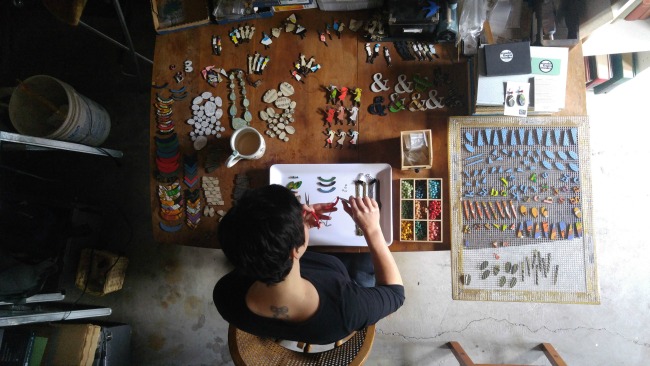
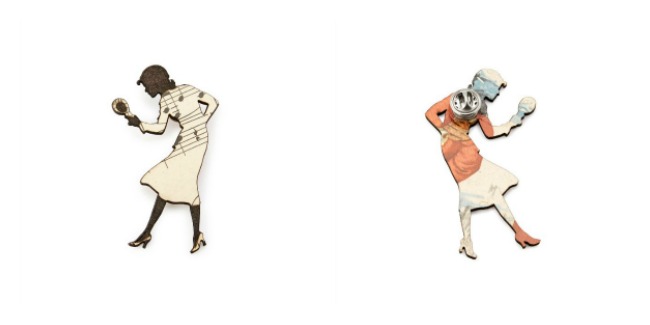
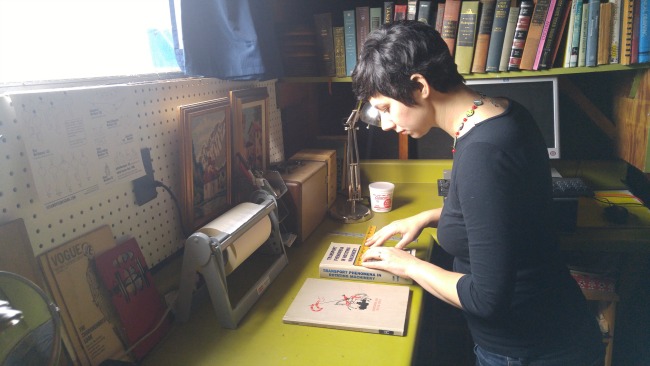
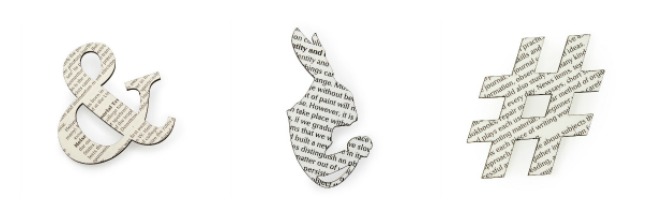

No Comments